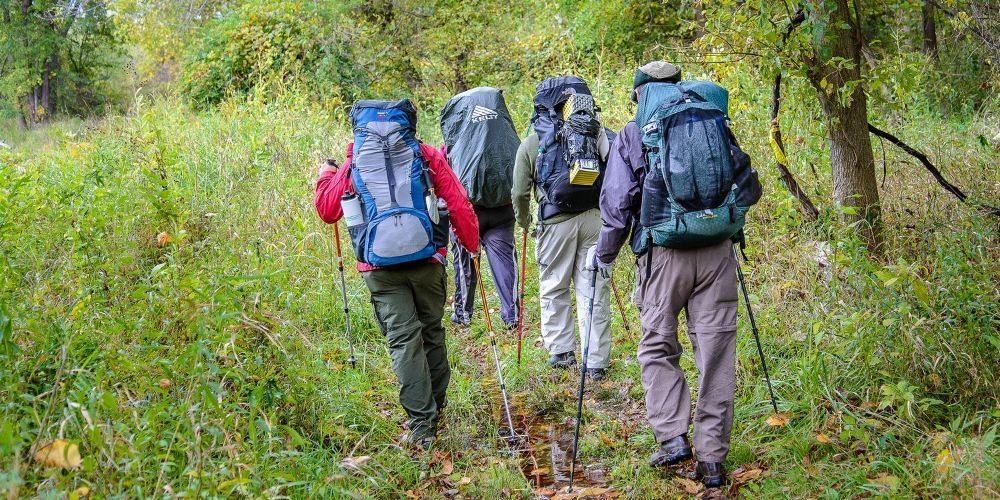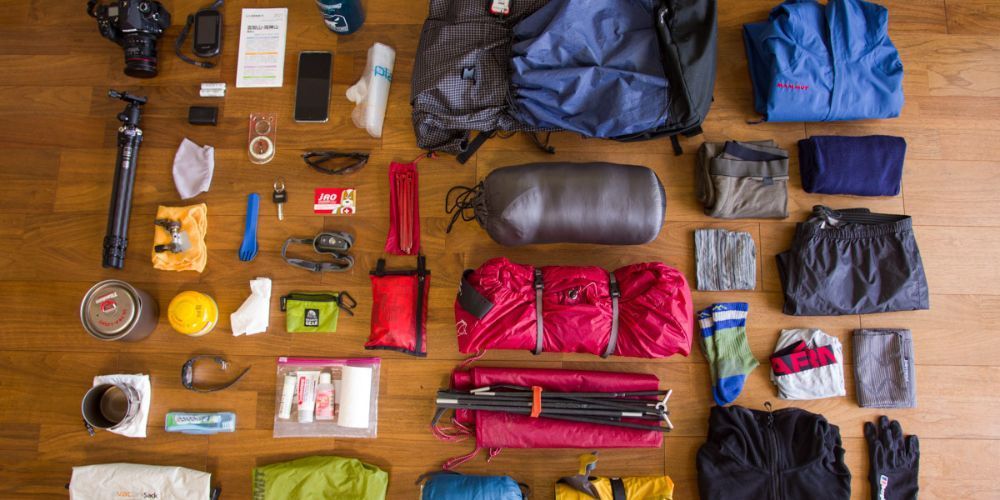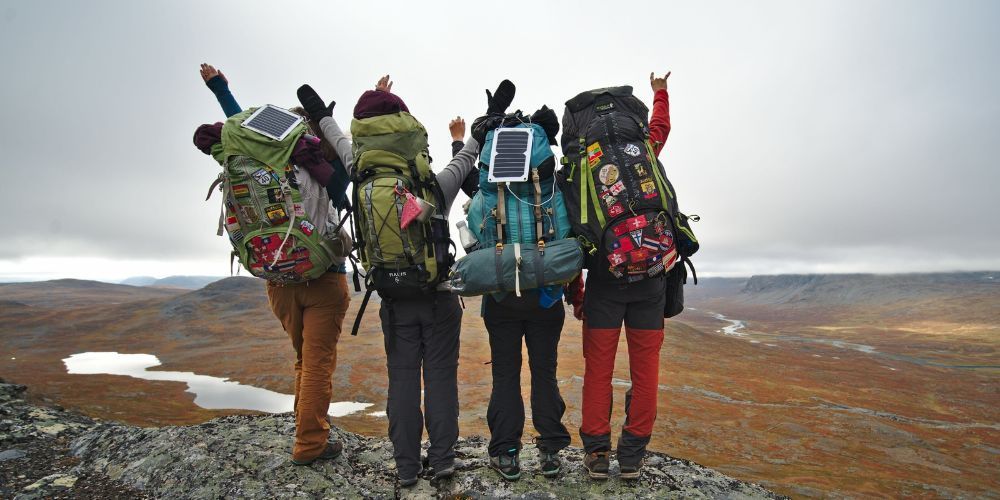The Ultimate Beginner's Guide to Backpacking: Tips and Essentials for Your Adventure
July 3, 2024
Embarking on your first backpacking adventure is both thrilling and daunting. Imagine yourself setting off on a trail, the crunch of fallen leaves beneath your boots, feeling an incredible connection with nature while having lingering worries about what gear you'll need or how to stay safe out there. I’ve spent countless hours researching and consulting seasoned backpackers to bring you the most reliable tips and essentials, ensuring you step out confidently.
The joy of hiking through serene landscapes often comes after careful planning and acquiring certain skills. Being able to quickly pitch your tent when raindrops start falling or knowing how to read trail markers can make all the difference between a smooth trip and potential troubles. Our guide aims to provide not just functional knowledge but also crucial insights derived from hands-on experiences, helping you avoid common rookie mistakes and enhancing your enjoyment of the outdoors right from your first step.
As a beginner backpacker, it's important to choose an easy destination, get essential gear and clothing, plan your food, and prepare for the trip. Additionally, consider consulting with experienced backpackers for advice and select trails with well-established campsites and water sources nearby for added convenience.

Essential Beginner Tips for Backpacking
Embarking on your first backpacking trip is an exciting prospect, and it's crucial to start with the right approach. One of the most essential tips for beginners is to "start small." Opt for a trail that isn't too demanding—a 5-mile loop or an overnight stay at a nearby campsite will allow you to get a feel for backpacking without overcommitting. By choosing a shorter distance with minimal elevation gain, you'll ease into the experience and have ample time to adjust to the demands of carrying a loaded backpack while immersing yourself in the beauty of nature.
Another fundamental aspect of backpacking proficiency is mastering basic skills. Learning how to set up your tent effectively, filter water from natural sources, and navigate using a map and compass are foundational skills that play a pivotal role in ensuring your safety and comfort during the adventure. Acquiring these essential skills prior to your trip will instill confidence and make your journey smoother and more enjoyable. It's akin to laying a strong foundation before building a house; without these fundamental skills, every other aspect of your backpacking experience may seem more challenging than it needs to be.
Additionally, embracing the "buddy system" can significantly enhance both the safety and enjoyment of your backpacking excursion. Hiking with a friend or joining a local backpacking group provides mutual support, gives you someone to share the experience with, and ensures that you're not navigating the wilderness alone. Moreover, having someone else along who shares your enthusiasm for the outdoors adds an extra layer of enjoyment and camaraderie to your journey.
In preparing for your first backpacking trip, these essential beginner tips lay the groundwork for an enriching and safe experience in the great outdoors.
Planning Your First Backpacking Trip
Embarking on your first backpacking trip is an exhilarating yet delicate undertaking. The success of your journey hinges on meticulous planning and preparation. As a first-time backpacker, sticking to well-trodden paths is crucial to ensure a safe and enjoyable experience. Let's dive deep into the essential steps for planning your maiden backpacking adventure.
Research Destinations
When selecting a destination for your first backpacking expedition, it's wise to start with something familiar. Consider reaching out to seasoned backpackers for insights or opt for trails close to home. Prioritize trails with clear markers, moderate elevation gain, and accessible amenities like designated campsites and water sources. Apps like AllTrails, Gaia GPS, and Hiking Project offer a treasure trove of user-generated trail reviews, detailed maps, and essential information such as trail difficulty ratings. Leveraging these digital resources can aid in charting a promising path that aligns with your skill level and preferences.
While it may be tempting to venture into the unknown, remember that embarking on your first backpacking trip isn't about proving yourself on the most challenging route. It's about gaining confidence and acclimating to the rhythm of the wilderness while reveling in the marvels it has to offer.
Create a Detailed Itinerary
Crafting a comprehensive itinerary is at the heart of successful backpacking excursions. Calculating daily mileage, sketching out camping spots, and planning rest stops are pivotal in curating an enriching experience. Additionally, sharing your detailed itinerary with a trusted friend or family member not joining the trip is vital for safety. In the unlikely event of an emergency, having someone aware of your whereabouts can make all the difference. Consider incorporating specifics like estimated timelines for reaching certain locations, potential bailout points along the trail, and any landmarks or peculiar terrain features that could aid rescuers in locating you in case of an emergency.
Check the Weather
Monitoring weather forecasts for your chosen destination is elemental in packing appropriate gear and clothing for your expedition. Anticipate dynamic weather patterns by closely studying historical climate data for the area you plan to explore. Packing moisture-wicking and quick-drying clothing alongside layered pieces will help you adapt to various weather conditions seamlessly. Apart from conventional weather apps and websites, consider digging deeper by consulting local ranger stations or online hiking forums for firsthand accounts of prevailing weather trends at your selected trailhead.
Planning your first backpacking trip involves striking a harmonious balance between steering clear of undue risks and savoring the thrill of embracing nature's grandeur. By meticulously researching destinations, crafting detailed itineraries, and keeping a vigilant eye on ever-changing weather patterns, you're laying the groundwork for an unforgettable initial expedition into the backcountry.
Assembling Your Backpacking Gear
So, the time has come to pack up for an exciting journey into the great outdoors! But before you do, let's talk about assembling your backpacking gear. It's pivotal to invest in quality items that will support you throughout your trip, rather than a wide range of random things that may become a burden. When it comes to essential items like your backpack, sleeping bag, and tent, opt for features that offer comfort, durability, and reliability. Brands such as Osprey and REI are highly regarded for their top-quality gear and outstanding customer reviews. Having sturdy and dependable gear provides peace of mind, knowing that you're equipped with the best tools for the trip.
When looking for a backpack, ensure it is well-fitted to your body measurements. A comfortable sleeping bag is crucial for a good night's sleep and recovery while out on the trail. Pay attention to its insulation, shape, and weight. Additionally, a reliable tent should provide protection from the elements and be easy to set up. Investing in these quality items will not only enhance your outdoor experience but also increase their longevity.
Testing Your Gear
Once you've secured the necessary gear, it's vital to become familiar with each item before taking off on your adventure. Setting up your gear at home or in a local park enables you to practice using your tent, stove, and water filter ahead of time. This crucial step helps prevent last-minute confusion when you're out on the trail, giving you confidence in handling the equipment when it truly counts.
Imagine setting off into the wilderness with brand-new gear that you must figure out how to use under pressure - it's less than ideal! By practicing setting up your tent a few times beforehand, checking that your stove functions properly, and getting comfortable with filtering water, you'll feel much more prepared when you're actually out in nature.
For example, familiarizing yourself with pitching your tent ensures that you know how to properly secure it without leaving any gaps where bugs or weather can sneak in. Likewise, practicing using your stove can help avoid mishaps or delays when preparing meals on the trail.
Ultimately, taking the time to familiarize yourself with your gear beforehand sets the stage for a smoother, more enjoyable adventure. It allows for troubleshooting any issues, ensuring everything works as intended so that when the big day arrives, all that’s left is to embrace the experience and create lasting memories.
As we venture into the world of backpacking essentials, it becomes imperative to dive deeper into the specific gear that will elevate your outdoor experience. Let's now explore the key components that make packing smart an art form.
Packing Smart: Gear Essentials
Packing for a backpacking trip can be a bit of a puzzle, especially when you're just starting out. But with the right approach, you can easily fit everything you need into your backpack without overburdening yourself. Let's dive into the essential gear you should consider while packing for your backpacking adventure.
The "Big Three"
When it comes to backpacking, the "Big Three" refers to the most crucial gear: your backpack, shelter, and sleeping system. These are the items that take up the most space and weight in your pack, so choosing wisely is important.
For beginners, a 50-60 liter backpack is usually sufficient to accommodate all your essential gear while still maintaining a manageable weight. When selecting a backpack, factors such as comfort, durability, and adjustability are key. Look for features like padded hip belts and shoulder straps to distribute weight evenly and reduce strain on your body during long hikes.
Lightweight and Multipurpose Items
In the world of backpacking, every ounce matters. Opting for lightweight, multipurpose items can help save precious space and reduce the overall weight of your pack. Consider investing in a spork—an ingenious hybrid of a spoon and fork—that serves multiple functions without taking up extra room. Similarly, prioritize items that serve dual purposes to minimize redundancy in your gear selection.
Furthermore, when it comes to clothing, prioritize pieces that are lightweight, moisture-wicking, and quick to dry. These characteristics are particularly important when venturing into varying climates or high-intensity activities where temperature regulation is essential. Layering options are also valuable as they allow you to adapt to changing weather conditions by adding or removing clothing as needed. Be mindful of the waterproof or water-resistant properties of your outer layers to repel rain and snow effectively.
Essential Clothing Selection
When considering clothing, aim for versatility through strategic layering. While cotton materials should be avoided due to their tendency to retain moisture, opt for breathable and moisture-wicking fabrics like polyester or merino wool. Moisture-wicking fabrics draw sweat away from the body and facilitate quick evaporation—keeping you dry and comfortable during strenuous activity.
By focusing on these essential packing considerations—prioritizing the "Big Three" items and choosing lightweight, multipurpose gear—you'll streamline your packing process while optimizing comfort and efficiency during your backpacking journey.
Now equipped with necessary essentials for your backpacking adventure, let's explore how to ensure health and comfort on the trail.

Health and Comfort on the Trail
When you're out in the wild, it's not just about having the right gear—it's also about taking care of yourself. Your health and comfort are essential for a successful backpacking trip. Now, let's dive into some key aspects that will keep you feeling good and energized while you explore the great outdoors.
Proper Footwear for Happy Feet
One of the essentials that can truly make or break your outdoor experience is a pair of comfortable, well-broken-in hiking boots. The significance of choosing the right footwear cannot be overstated; it affects everything from maneuverability on uneven terrains to preventing injuries. It's always a good idea to carry blister prevention supplies, such as moleskin and foot powder, to address any discomfort before it escalates.
Imagine being in the middle of a beautiful forest, completely mesmerized by nature, only to feel a hot spot forming on your heel due to uncomfortable shoes. Simple troubles like this can quickly escalate, causing discomfort and possibly leading to blisters. By wearing footwear that fits well and suits the specific demands of backpacking, you'll significantly reduce the likelihood of suffering from such issues.
Nutrition and Hydration: Fueling Your Adventure
Backpacking isn't just a physical activity; it's an energy-intensive adventure that demands proper nutrition and hydration to keep you going. Planning balanced meals is crucial, and packing high-calorie, non-perishable snacks like nuts, dried fruits, and granola bars can provide essential energy throughout your journey. Properly timing your meals and snacks can maintain consistent energy levels, allowing you to fully enjoy the breathtaking landscapes and challenging trails.
Now, let's talk about hydration—arguably one of the most critical aspects of maintaining your well-being during a backpacking trip. Staying hydrated is vital for sustained endurance, especially when faced with steep inclines and changing weather conditions. Carrying a reliable hydration system such as a CamelBak or lightweight water bottles makes it easy to drink regularly. Ensuring you have access to clean water along the trail is paramount.
It's easy to underestimate how quickly dehydration can set in during physical activities like hiking with a heavy pack. Finding yourself without sufficient water when miles away from the next refill point can quickly turn into an uncomfortable situation. Preparing for this scenario by carrying adequate water ensures that you're always equipped to manage your body's needs.
In prioritizing footwear that provides support for miles of walking and taking care to nourish and hydrate yourself properly are indispensable components of ensuring a positive backpacking experience. Your feet carry you through rugged terrain while your nourishment fuels your adventure—don't overlook these fundamental elements that contribute to your overall comfort and safety on the trail.
As we embark on this journey together, it's time to discuss the critical safety measures new backpackers need to integrate into their outdoor pursuits.
Safety Measures for New Backpackers
Safety should always be a top priority when embarking on outdoor adventures. For beginners venturing into the world of backpacking, there are specific safety measures that should be taken to ensure a secure and enjoyable experience. Now, let's explore the essential safety tips and precautions for new backpackers.
Emergency Preparedness and First Aid
It's essential to be prepared for unforeseen situations while backpacking. A basic first-aid kit tailored to your medical needs is a must-have. This kit should include essentials such as bandages, antiseptic wipes, tweezers – and any personal medications you require. Consider the specific needs of your group members, if applicable. If you're new to wilderness first-aid, consider taking a course to equip yourself with the knowledge and skills needed to handle emergencies in the backcountry.
Aside from carrying a first-aid kit, acquiring knowledge about how to use its contents is equally important. Knowing how to treat minor injuries and being familiar with common medical problems that can occur during a backpacking trip is crucial. When you're several miles away from the nearest medical assistance, having this knowledge could make all the difference between a minor inconvenience and a major problem.
Navigational Tools
While we heavily rely on electronic devices for navigation in our daily lives, it's crucial to carry physical maps and a compass as backups for your electronic devices when venturing into the wilderness. Electronic devices can malfunction or lose power, leaving you disoriented and lost. Learn how to read topographical maps and understand trail markers beforehand so that you're equipped with the necessary skills for navigation in the backcountry.
"The skillful use of maps and compasses will aid you unerringly in your hikes though you perceive no beaten path, no shelter."Horace Kephart
Knowing how to navigate using traditional tools provides a sense of self-reliance and security. It equips you with the ability to find your way even when technology fails, making your backpacking experience not only safer but more empowering.
With these fundamental safety measures in mind, you'll be better prepared to handle unexpected situations while enjoying the great outdoors.
Armed with critical knowledge about staying safe on the trail, let's now step into the realm of exciting activities to relish amidst nature's serenity.

Activities to Enjoy in the Wilderness
When you're out in the wild, surrounded by nature's beauty, there are so many ways to fully immerse yourself in the experience. Here are a few activities that can enhance your backpacking adventure and make it even more rewarding.
Wildlife Observation
The wilderness is teeming with all sorts of fascinating creatures. Bring along a field guide or a smartphone app that can help you identify local plants and animals. Bird watching and learning how to recognize animal tracks and signs are not only educational but also immensely enjoyable. There's nothing quite like the excitement of spotting a rare bird or identifying animal tracks while on the trail. Just remember to observe from a safe distance and respect the natural habitat of these creatures.
Quick Tip: Always maintain a respectful distance from wildlife and avoid feeding or disturbing them. Appreciate them from afar using binoculars or a camera with a good zoom lens.
Journaling and Photography
Your backpacking experience is a deeply personal journey, and capturing it through journaling or photography is a wonderful way to cherish those memories for years to come. Whether it's jotting down your thoughts at the end of each day or snapping photos of breathtaking landscapes, documenting your adventure can add another layer of richness to your trip.
Imagine sitting by a serene mountain lake as the sun sets, capturing the vibrant colors reflected on the water's surface with your camera or painting a scene with words in your journal. These moments become part of your story, creating lasting memories that you'll treasure forever.
Moreover, documentation through journaling allows you to reflect on your journey, recording not just the places you've been but also how you felt during each part of your backpacking adventure. It can be incredibly rewarding to look back at your entries and relive the challenges you overcame, the awe-inspiring sights you witnessed, and the personal growth you experienced along the way.
So, whether you're keen on identifying woodland creatures or aiming to capture the beauty of nature through creativity, engaging in these activities during your backpacking trip can significantly enrich your experience and leave you with unforgettable memories.
Engaging with nature through wildlife observation, journaling, and photography can transform a simple backpacking trip into a soul-stirring adventure that stays etched in your memory for years to come.
How do I choose the right backpack for my needs as a beginner?
When choosing a backpack for your beginner's adventure, comfort and functionality should be your top priorities. Look for a backpack with adjustable straps, padded hip belts, and breathable back panels to ensure a comfortable fit. Consider the capacity of the backpack based on the duration of your trip and the gear you plan to carry. Aim for around 50-60 liters for most weekend trips. Additionally, check for multiple compartments and external pockets to help you stay organized on the go.
What essential gear do I need for backpacking as a beginner?
As a beginner backpacker, some essential gear you'll need includes a reliable backpack, a lightweight tent, a sleeping bag suitable for the weather conditions, a camping stove and cookware, water purification tablets, a first aid kit, and proper clothing including sturdy hiking boots. These items will ensure your comfort and safety throughout your adventure. According to a survey conducted by the Outdoor Industry Association in 2019, 64% of backpackers considered a comfortable backpack to be the most critical gear for their trips. Additionally, 55% emphasized the importance of having a good quality tent.
What are some common mistakes that beginners make while backpacking and how can they be avoided?
Some common mistakes that beginners make while backpacking include overpacking, not planning their itinerary properly, and neglecting to check the weather forecast. These mistakes can easily be avoided by packing light and only bringing essential items, thoroughly researching the destination and creating a detailed itinerary, and checking the weather beforehand to ensure appropriate clothing and gear are packed. According to a survey conducted by Adventure Travel Trade Association, around 45% of backpackers overpack on their first trip, leading to unnecessary discomfort and fatigue. Planning ahead and being well-prepared can greatly enhance the backpacking experience for beginners.
Are there any recommended trails or destinations for beginner backpackers?
Yes, there are several recommended trails and destinations for beginner backpackers. One popular option is the Appalachian Trail in the United States, which stretches over 2,000 miles and offers various sections suitable for beginners. Another great choice is the West Coast Trail in Canada, known for its breathtaking coastal scenery and well-maintained hiking paths. Additionally, beginners might consider exploring the Camino de Santiago in Spain, an ancient pilgrimage route with a well-established infrastructure of hostels. These trails provide beginner backpackers with breathtaking views, clear paths, and ample opportunities to connect with nature while gaining valuable experience. According to recent statistics, approximately 10 million people hike on the Appalachian Trail annually, highlighting its popularity among beginners and experienced backpackers alike.
What are some important safety tips for beginner backpackers?
Some important safety tips for beginner backpackers include:
- Plan your route and inform someone of your itinerary in case of emergencies.
- Pack essential safety items like a first aid kit, navigation tools, and a whistle for signaling distress.
- Stay hydrated and watch out for signs of dehydration, as it can be a serious risk.
- Be cautious around wildlife and follow proper food storage guidelines to avoid encounters.
- Always check weather forecasts and be prepared for changing conditions.
According to the National Park Service, dehydration is one of the leading causes of hiker-related medical emergencies, emphasizing the importance of staying hydrated on backpacking trips. Additionally, being well-prepared with essential safety items and considering potential wildlife encounters can significantly reduce risks during outdoor adventures.
What are the essential items I need for my first backpacking trip?
For your first backpacking trip, you should pack the following essential items:
- Backpack: A good quality backpack that fits well and has enough capacity for your gear.
- Tent/Shelter: Lightweight and easy to set up.
- Sleeping Bag and Pad: Suitable for the weather conditions you'll be encountering.
- Cooking Supplies: A lightweight stove, fuel, and cookware. Don't forget utensils and a lighter.
- Food and Water: Non-perishable food items, a water filter or purification tablets, and enough water for your trip.
- Clothing: Layers suitable for the weather, including moisture-wicking base layers, insulating layers, and a waterproof jacket.
- Navigation Tools: Map, compass, or GPS device.
- First Aid Kit: Basic medical supplies for emergencies.
- Miscellaneous: Headlamp with extra batteries, multi-tool, toiletries, sunscreen, bug repellent, and a whistle.
How do I choose the right backpack for my needs?
When choosing a backpack, consider the following factors:
- Capacity: For beginners, a pack with 40-60 liters of capacity is usually sufficient.
- Fit: Ensure the backpack fits your torso length and is adjustable. Try it on with weight to test comfort.
- Features: Look for features like multiple compartments, hydration compatibility, and a comfortable hip belt and shoulder straps.
- Weight: Opt for a lightweight pack, but don’t sacrifice durability.
- Ventilation: A good ventilation system can help keep your back cool during long hikes.
What type of food should I bring on a backpacking trip?
Bring lightweight, high-calorie, and easy-to-prepare foods. Some options include:
- Dehydrated Meals: Easy to prepare and lightweight.
- Energy Bars: Quick and convenient for snacking.
- Trail Mix: A mix of nuts, dried fruit, and chocolate for energy.
- Instant Oatmeal: Easy to prepare for breakfast.
- Pasta and Rice Dishes: Lightweight and filling, just add hot water.
- Jerky: High in protein and lightweight.
- Nut Butter: Great for adding to snacks or eating on its own.
- Fresh Fruit: Choose fruits that are durable and won’t spoil quickly.
How can I ensure my safety while backpacking?
Ensuring your safety while backpacking involves several precautions:
- Plan Your Route: Share your itinerary with someone and stick to it.
- Check Weather Conditions: Be prepared for sudden changes in weather.
- Stay Hydrated: Drink plenty of water and know where to find water sources along your route.
- Wildlife Awareness: Know how to handle encounters with wildlife and store food properly.
- First Aid Knowledge: Carry a first aid kit and know basic first aid techniques.
- Navigation Skills: Be proficient with a map and compass, and have a GPS device as a backup.
- Stay on Trails: Avoid getting lost by staying on marked trails.
What are some tips for first-time backpackers to make the trip more enjoyable?
To make your first backpacking trip enjoyable:
- Start Small: Choose a shorter, easier route for your first trip.
- Pack Light: Only bring essentials to keep your pack weight manageable.
- Break in Gear: Test your gear, especially boots, before your trip to avoid blisters and discomfort.
- Pace Yourself: Don’t rush, take breaks, and enjoy the scenery.
- Stay Positive: Embrace the experience, even if things don’t go as planned. Learn from any challenges.
- Practice Leave No Trace Principles: Respect the environment by packing out all trash and minimizing your impact.
Check out the latest guides on backpacking gear
Check out the latest guides on camping gear
Check out the latest guides on hiking gear
Author: William Flaiz










